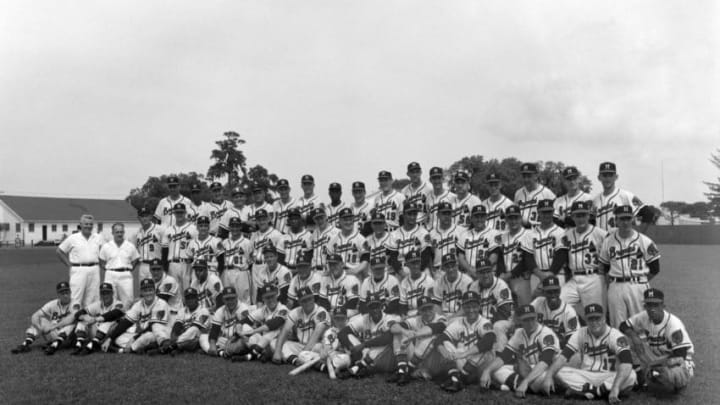
Repeats Illude the Milwaukee and Atlanta Braves
The Atlanta Braves won the World Series in 1995, as Milwaukee did in 1957, and reached the series in 1996, as Milwaukee did in 1958, but the Braves lost both times because baseball is hard, and winning a World Series is incredibly hard.
In 1996, the Atlanta Braves jumped out to a three-game lead only to have the Yankees bounce back and sweep Atlanta in the next four games.
Injuries to Adcock and Connelly and the absence of Schoendeinst, who was diagnosed with Tuberculosis, didn’t stop Haney from leading the 1958 Braves Braves to a 92-62-0 record and another NL Pennant.
The Milwaukee Braves took the first two games at home, lost game three, then won game four in New York, only to have the Yankees sweep the next three games.
The Braves weren’t as dominant in 1959. Covington played only 103 games and didn’t hit with the same consistency, Schoendeinst missed the season, and Burdette took a step back.
Still, they ended the season tied with Dodgers for first but lost the two-game playoff and finished in second place with an 86-70-1 record, two games behind the eventual World Series Champions.
Bye-Bye Fred
Haney’s. After leading the Braves to a 341-231-3 record, 110 games over .500 (.596 W-L%), two second-place finishes, two NL Pennants, and the second World Series Title in the history of the franchise, the Braves fired Fred Haney.
Reports of Haney’s departure offered two explanations: he asked owner Lou Perini for more authority over player acquisition, or Haney wanted to return to LA; Haney’s career suggests either was possible.
Haney had hinted during the season that it could be his last with the Braves, and some think that’s why he left. Others suggested Haney wanted a bigger say in player acquisition and trades, a skill he’d used with great success in his minor league managerial days.
Haney may have known something others didn’t; his friend Gene Autry was about to win the bidding for an expansion team in LA, the Angels.
Epilogue
If anyone can claim the title of midwife of a franchise, it’s Fred Haney. Haney dug out under-value veterans instead of declining big names and snatched Dean Chance and Jim Fregosi in the expansion draft.
He drove the refurbishment of Wrigley Field – the one in Los Angeles – created a Spring Training facility in Palm Springs, made 20 trades before Spring Training began, and when the 1961 season ended, the Los Angeles Angels were 70-61-1.
The Angels’ finish remains the highest finish of any expansion team in its first year. In 1962, they finished third, earning Haney the Major League Executive of the Year from The Sporting News and UPI.
Haney remained as Angels GM through the club’s move to Anaheim, then became a special assistant to Autry. Every year the Angels present the Fred Haney Award He followed the Angels until his death in 1977.
That’s a Wrap
Today’s Atlanta Braves fans have seen Brian Snitker take a team that wasn’t competitive and, after one season, turn it into a perennial contender, yet many don’t appreciate Snitker’s role in the process.
Managers must be able to right the ship or, to mix metaphors, get the team back on track; that skill separates managers from coaches. Snitker’s proved he has it over the last five seasons as Atlanta Braves skipper, and from 1956 through 1959, so did Fred Haney.
